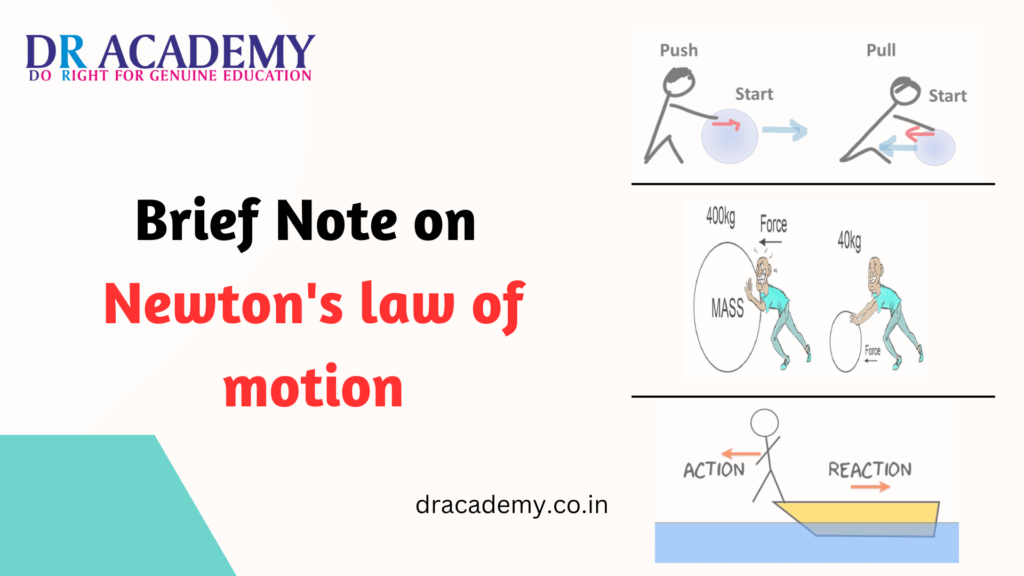
Introduction
In the vast realm of physics, Sir Isaac Newton stands as a giant whose contributions have shaped our understanding of the physical world. Among his many groundbreaking ideas, Newton’s Laws of Motion are fundamental principles that form the bedrock of classical mechanics. These laws provide insights into the motion of objects and have applications ranging from simple daily activities to complex interplanetary calculations.
Newton’s Three Laws of Motion
Newton’s First Law – It is also called as “The Law of Inertia”, The law describes that an object at rest will remain at rest and an object in motion will continue to be in a motion at a constant speed unless & until an external force act upon it. In essence, it asserts that objects tend to maintain their current state of motion. This principle is perhaps best illustrated by considering a book at rest on a table. The book remains stationary until an external force, such as a hand pushing it, overcomes its inertia and sets it in motion.
Newton’s Second Law – It is also called as “The Law of Acceleration”, This Law is a mathematical expression that relates force, mass and acceleration. The law describes that the force acting on an object is equal to the mass of the object multiplied by its acceleration. Mathematically, this can be expressed as F = ma, where F is the force applied, m is the mass of the object, and a is its acceleration. This law emphasizes the concept that the force required to accelerate an object is directly proportional to its mass. For example, it takes more force to accelerate a heavy truck than a lightweight bicycle, assuming the same acceleration is desired.
Newton’s Third Law – Action and Reaction: Newton’s Third Law is perhaps one of the most well-known and frequently cited principles in physics. It describes that for every action, there is an equal and opposite reaction. In other words, if object X exerts a force on object Y, then object Y simultaneously exerts a force of equal magnitude in the opposite direction on object X. A classic example of this law is the recoil of a firearm. When a gun is fired, the bullet is propelled forward, and the gun experiences a backward force, or recoil.
Applications and Significance Newton’s Laws of Motion have widespread applications in our daily lives and in fields such as engineering, astronomy and biomechanics. They provide the foundation for understanding and predicting the motion of objects, from the simple mechanics of a car on a road to the complex trajectories of planets in our solar system.
conclusion, Newton’s Laws of Motion are not just abstract principles confined to physics textbooks; they are guiding principles that govern the behavior of the physical world. As we delve deeper into the mysteries of the universe, we continue to build upon the legacy of Newton, recognizing the enduring relevance of his laws in unraveling the secrets of motion and force.





